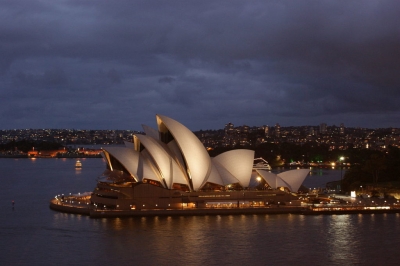
Many of the world’ most elegant modern buildings have been constructed with a material bearing the unromantic name of prestressed concrete. Skyscrapers, graceful bridges, slender dams, even the Sydney Opera Hose, all rely on its enormous strength.
Prestressed concrete has steel cables running through it that have been stretched by hydraulic jacks. As the cables try to their original length, they pull inwards – compressing the concrete.
The idea of prestressed concrete was first used effectively in 1928 by the French civil engineer Eugene Freyssinet. He developed two sorts – pre-tensioned concrete in which the wires are stressed before the concrete has set, and post-tensioned concrete, stressed after it has set.
In bridge construction today, steel cables are threaded through ready-made holes in precast concrete blocks. Then the cables are stretched and anchored with conical plugs in the blocks at each end of the bridge to maintain their tension. the principle is the same as picking up a row of books by squeezing the ends together. In effect the books create a beam, and the harder you squeeze the stronger the beam becomes. And within limits, the more a bridge’s concrete blocks are compressed, the stronger the bridge will be.
Pre-tensioned concrete is made in factories. Wet concrete is poured over stretched steel wires while they are held under tension. Once the concrete has set, the wires can be cut off at each end of the concrete block, pulling it together. this method is used to produce railway sleepers and strong concrete beams anything up to 150ft (46m) long.
Demolishing a structure built with prestressed concrete can be dangerous and quit unpredictable. When the building does to start to collapse, the locked-up forces and tension in the cables often sends rubble in all directions.
Picture Credit : Google



